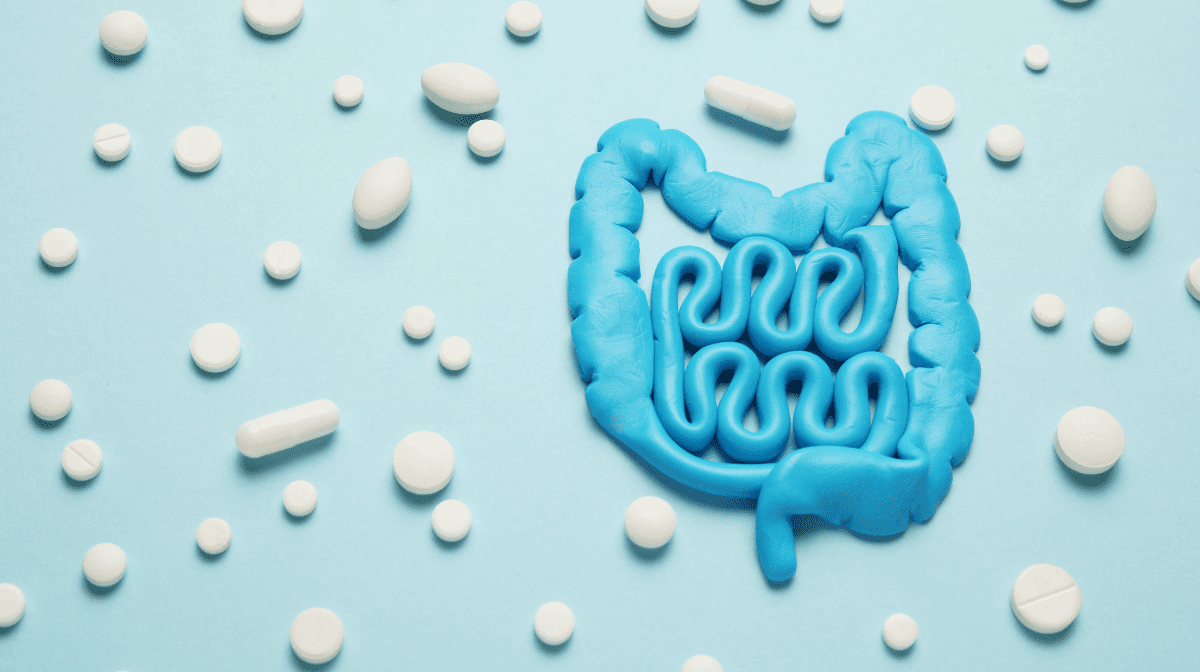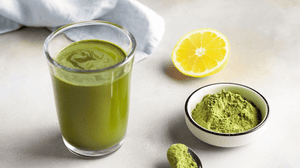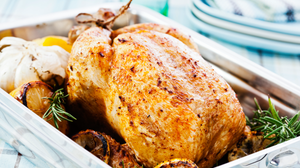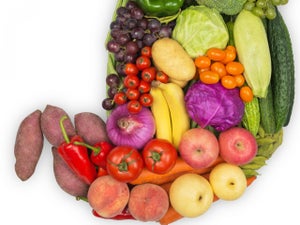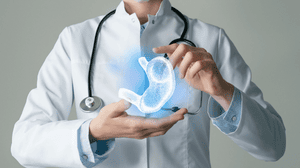It’s fairly likely that most of us will need to take a course of antibiotics at one point or another during our lifetime. Perhaps you’re suffering with a strep throat, a urinary tract infection or yet another ear infection and your doctor has prescribed antibiotics to get to the root of the problem. Or you’re due to have invasive dental work or some other kind of surgery where there is a higher risk of getting an infection and you are given antibiotics preventatively (also known as antibiotic prophylaxis).
When you’re unwell, taking antibiotics prescribed by your doctor can be an important step in eliminating harmful bacteria from your body, so that you can get back to feeling right as rain as soon as possible. But, as is often the case for a number of medications and treatments – antibiotics themselves are not without their side-effects. Many people report adverse side-effects of antibiotics, such as diarrhoea1, bloating, nausea, and indigestion.2
Antibiotics aren’t always effective for every kind of bacterial infection3 and may be prescribed if there is a likelihood that an infection will have serious side-effects, or that it may be spread to others. Even when antibiotics are deemed necessary, learning about their potential side-effects may cause you to wonder about the risks of taking them. It may also leave you feeling concerned about the implications for your digestive health. If these are issues that you are worried about, you’ll be reassured to know that there are a number of measures you can take to help to offset these side-effects, while still getting the treatment you need. And it all starts with your gut.
How does antibiotic use affect the gut?
Antibiotics work by killing harmful bacteria in your body, or by stopping these bacteria from reproducing, growing, and spreading. They do this by attacking the cell walls of individual bacteria, interfering with their reproduction, or stopping them from growing by blocking protein production.4
In our bodies, we have a number of bacteria that live alongside our own cells. In fact, there are so many non-human bacteria residing inside us that they are close in number to our cells (they may even outnumber them!).5 The majority of these bacteria reside in our gut.
Your gut microbiome
Your body and your gut are full of a range of non-harmful, ‘good-for-you’ bacteria. There are around 300 to 500 different bacterial species living in your gut alone!6 These gut bacteria – alongside archea, viruses, and fungi – make up what’s known as your gut microbiome. Many of the so called good bacteria in your gut microbiata assist with immunity, digestion, and other bodily functions. Your gut is rather like a miniature living ecosystem, where different living creatures work together to break down and recycle matter. Just as little critters help to break down fallen leaves in a rainforest and convert them into nutrient-rich soil for the array of trees and other plants, your gut bacteria help you to digest your food and convert it into the building blocks your body uses to grow, heal, and perform tasks that require energy.
Antibiotics are highly effective in treating a range of infections caused by bacteria. But because antibiotics are designed to kill bacteria – they also tend to wipe out a lot of your good bacteria, along with the bad kind. This can have implications on your digestive function, and can help to explain some of the negative side-effects you may experience while or after taking antibiotics, such as diarrhoea and bloating.
Dysbiosis
Dysbiosis – also known as an imbalance in your gut microbiome – has been linked to a number of serious health conditions, such as Irritable Bowel Syndrome (IBS).7 All of us have an extensive intestinal lining, which helps to keep things where they’re meant to be, and controls what gets absorbed into the blood from the food you eat. Dysbiosis is sometimes referred to as ‘leaky gut,’ because an unhealthy gut may have cracks or holes that let things in and out,8 whereas a healthy gut typically has a tight lining that keeps things where they’re meant to be. Many studies have linked a leaky gut to chronic fatigue, acne, and allergies.9
Dysbiosis may be due to a number of bacteria being lost or added to your gut microbiome, or a change in the proportion of certain strains of bacteria to each other. Numerous studies have suggested that antibiotic use can lead to dysbiosis, and dysbiosis-related health conditions.10 So, what can you do if you need to take antibiotics? There are a number of ways you can support your immunity and your digestive health. And one of the most important interventions you can make is through your diet. A balanced and healthy diet promotes good gut health, and a flourishing microbiome – which may help to counteract the effects of antibiotics, including dysbiosis.
What to eat before, during, and after antibiotic treatment
You can alter your diet in advance of antibiotic treatment, all the way through to after you’ve finished your antibiotic course, as a way to mitigate the possible effects the antibiotics may have on your gut microbiome. The same rule goes for taking a probiotic supplement – such asAlflorex®, which can be taken alongside antibiotics.
When planning a ‘good gut diet’, it’s important to know what a healthy microbiome needs to thrive. You will probably know that your gut microbiome needs plenty of different strains of bacteria, and other gut microbiata, existing in balance and working in harmony to function at its best. As antibiotics can reduce the number of bacteria that reside in your gut, or change their proportions, one of the first things you’ll want to think about is how to introduce more of them.
Good bacteria can be introduced to your gut microbiome in several ways. One of these is through your diet. Many foods contain good bacteria – also known as probiotics – which become a part of your gut microbiata when you eat them. Some foods are higher in probiotics than others. Fermented foods – such as kefir, for example – are packed full of the kind of probiotics that naturally reside in your gut. You may want to consider eating more foods that are high in probiotics to counteract things like antibiotic-associated diarrhoea, and other digestive disruption, before starting a course of antibiotics.
As well as eating lots of foods that are high in probiotics, you’ll also want to try and get more prebiotic foods into your diet. Prebiotics are not bacteria, but instead contain the kinds of substances bacteria use to grow and function. In other words, prebiotics are food for your prebiotics! It’s important to make sure your diet is full of lots of prebiotic foods if you’re taking a course of antibiotics – and the good bacteria in your gut will love you for it!
Of course, some foods that are high in prebiotics and probiotics might not be compatible with certain dietary requirements. Finding foods that meet all of your nutritional needs – particularly when you’re eating out – can be tough. That’s whenAlflorex®capsules can help. They’re free from gluten, soya, diary, lactose, GMO – making them suitable for all kinds of diets.
Similarly, some strains of bacteria found in probiotic supplements are actually antibiotic resistant, meaning they’re not as easily wiped out by antibiotics. Taking a probiotic supplement containing an antibiotic resistant strain of bacteria is one of the more effective ways you can reintroduce good bacteria to your gut when you’re concerned about anything from diarrhoea to dysbiosis when taking antibiotics. Plus, taking a probiotic along with introducing more prebiotics and probiotics through your diet is a great way to help support your immune system.
Foods that are naturally high in probiotics
A number of foods are naturally high in probiotics. In particular, foods of the fermented variety are the way to go if you want to introduce more probiotics into your gut microbiome - and avoid indigestion, diarrhoea, and all of the other disruptions antibiotics may introduce. Yoghurt, kefir, kimchi, and miso are all high in probiotics. Make sure to check the label when you’re buying yoghurt – as some (more processed) varieties don’t contain probiotics, and may lack the same benefits as a yoghurt containing a variety of bacterial strains.
High prebiotic foods
High prebiotic foods include leafy greens, and many other veggies such as artichokes and asparagus. You’ll also find them in soybeans, garlic, bananas, and whole grains. Eating a diet full of a range of these good-for-you foods won’t just make you feel great – but it may also mean you will lessen the negative effects of antibiotics on your gut microbiata.
- https://www.mayoclinic.org/diseases-conditions/antibiotic-associated-diarrhea/symptoms-causes/syc-20352231#:~:text=About%201%20in%205%20people,you%20stop%20taking%20the%20antibiotic
- https://www.nhs.uk/conditions/antibiotics/#:~:text=Antibiotics%20are%20used%20to%20treat,their%20own%20without%20using%20antibiotics
- https://www.nhs.uk/conditions/antibiotics/
- https://www.healthline.com/health/how-do-antibiotics-work#how-they-work
- https://www.nature.com/articles/nature.2016.19136
- https://www.ncbi.nlm.nih.gov/pmc/articles/PMC3983973/#:~:text=Within%20the%20human%20gastrointestinal%20microbiota,million%20genes%20(the%20microbiome)
- https://www.sciencedirect.com/topics/medicine-and-dentistry/dysbiosis#:~:text=Dysbiosis%20is%20often%20defined%20as,in%20relative%20abundance%20of%20microbes.
- https://www.health.harvard.edu/blog/leaky-gut-what-is-it-and-what-does-it-mean-for-you-2017092212451
- https://www.health.harvard.edu/blog/leaky-gut-what-is-it-and-what-does-it-mean-for-you-2017092212451
Sources:
https://www.health.harvard.edu/staying-healthy/can-gut-bacteria-improve-your-health
https://www.healthline.com/health/how-do-antibiotics-work#how-they-work
https://www.ncbi.nlm.nih.gov/pmc/articles/PMC6511407/
https://www.health.harvard.edu/blog/leaky-gut-what-is-it-and-what-does-it-mean-for-you-2017092212451
